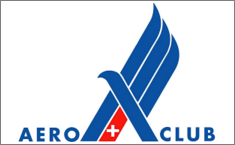During years of experience, almost a century in gliding since the first hops of brave pioneers, proven procedures have evolved, which counteract the most important hazards in gliding. Those are not only passed on from flight instructors to pilot trainees, but also laid down as regulation or club rule. Violating such rules will be punished.
We call this kind of flight safety static flight safety or rective flight safety. ‹Reactive›, because rules and regulations often arose from accidents.
Is this static method effective?—Yes!
Thanks to the evolution of procedures and regulations, the accident rates, e.g. for gliding in Switzerland, were lowered from more than 200 fatal accident per 1M flights in 1980 to only 34 in 2000.
Today, the biggest issues have been addressed, regulations are fine-tuned, weather is rarely a factor, and so are technical problems. Almost all accidents nowadays can be tracked to the human factor. Contributing are circumstances in the ‹system› gliding, which are rarely investigated after accidents: traiing, organisation, club composition and club management.
Therefore, the accident rate has stagnated for 15 to 20 years on an inacceptably high level.
A Broader View
Also others had the problem of stagnating accident rates: Commercial aviation in the 1980s saw accident rates stabilizing instead of decreasing like before. The safety niveau of 1 accident in 1M flights would mean an airline crash every two weeks, considering todays frequency of flights.
The airlines realised, that something had to be done, considering the rising amount of air traffic. Technology had reached a mature relibility, so the focus was on the human factor now, empoying dynamic flight safety.
We can also employ this approach of dynamic flight safety in gliding and enhance our safety posture—specifically: preventing accidents and hence the loss of club mates.






